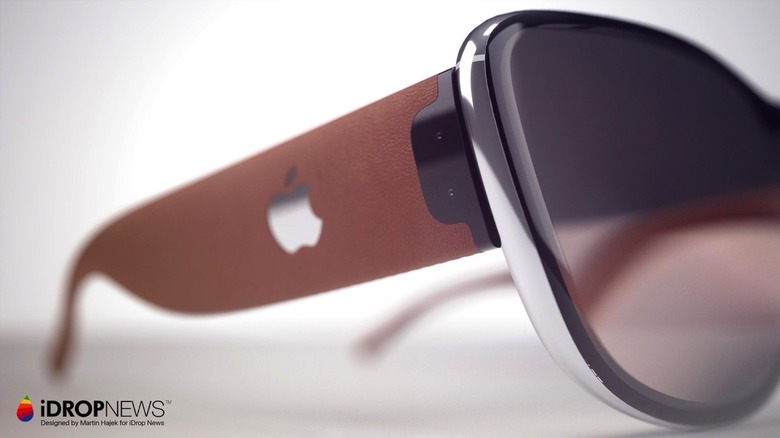Yet More Evidence Apple Is Working On AR Glasses For Mixed Reality
Apple is expected to launch its own pair of mixed reality glasses at some point in the coming years, a new wearable device that would complement the iPhone and enhance its abilities to deliver augmented and virtual reality experiences to the user, likely with a focus on the former.
Various reports have said that Apple is already working on AR glasses of its own, and plenty of patents further entertain the idea that the iPhone maker is already developing a real iPhone "killer."
The AR glasses would project iPhone content directly into the user's retina, reducing the need to unlock the handset and turn on the display. The glasses, however, would likely need to connect wirelessly to an iPhone to work, much like the Apple Watch. At least that's what we expect from Apple's first AR glasses.
![]()
In the meantime, the USPTO published a new Apple patent application, no. 20180113508, which details a new Apple inovation for AR glasses.
Titled Eye Tracking System, and discovered by Apple Insider, the documentation describes ways to track the user's eye movements to offer him or her a more immersive experience.
By tracking the movements of the eyes, the AR device would be able to adapt the images that are projected on the user's retina, and offer a seamless mixed reality experience where digital images would merge with images from the real world, or give the users the impression that they're located in the VR environment:
Virtual reality (VR) allows users to experience and/or interact with an immersive artificial environment, such that the user feels as if they were physically in that environment. For example, virtual reality systems may display stereoscopic scenes to users in order to create an illusion of depth, and a computer may adjust the scene content in real-time to provide the illusion of the user moving within the scene. When the user views images through a virtual reality system, the user may thus feel as if they are moving within the scenes from a first-person point of view. Similarly, mixed reality (MR) combines computer generated information (referred to as virtual content) with real world images or a real world view to augment, or add content to, a user's view of the world. The simulated environments of VR and/or the mixed environments of MR may thus be utilized to provide an interactive user experience for multiple applications, such as applications that add virtual content to a real-time view of the viewer's environment, interacting with virtual training environments, gaming, remotely controlling drones or other mechanical systems, viewing digital media content, interacting with the Internet, or the like.
Tracking the eyes would also help the user interact with some of the content on the screen, the patent explains. Furthermore, monitoring movements such as pupil dilation and eyelids closure would allow apps to translate that movement into avatar animations inside VR and AR apps. Think of Animoji, but in apps.
![]()
Apple proposes the use of subtle hardware elements to track eye movements, which would allow it to limit the increase in thickness of the actual glassware. Also, all this is supposed to happen without blocking the user's view.
The system is made of a bunch of elements, including tiny infrared emitters that would use a hot mirror (which allows regular light to pass) to project light into the user's eye. The IR light is reflected the mirror, and then returns to a side-mounted eye-tracking camera.
Like with any Apple inventions, there's no guarantee that the features described in this patent application will make their way into commercial products. But the bottom line is that Apple is looking to deliver immersive mixed reality experiences with its AR glasses without sacrificing design in the process.
